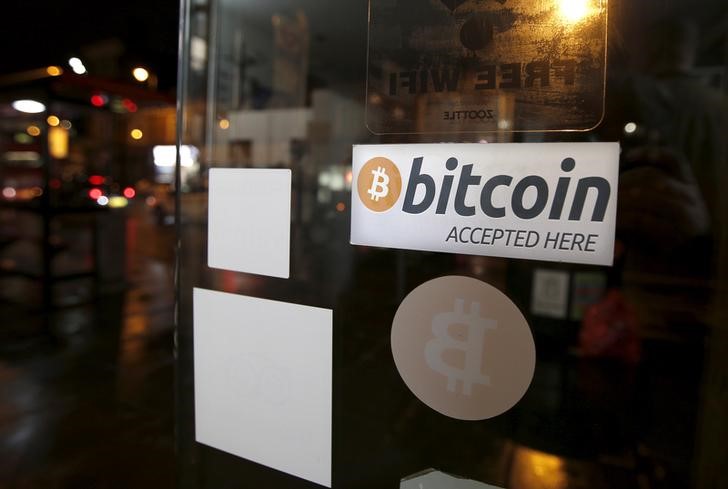Benzinga - Bitcoin transaction fees recently spiked to the highest levels in years, causing headaches for Bitcoin (CRYPTO: BTC) users worldwide. The cause of all this drama? Ordinals, a method of inscribing data on the Bitcoin blockchain, has made it possible to mint Bitcoin NFTs.
This only became an issue since the Taproot upgrade was implemented in November 2021. The upgrade brought several improvements to Bitcoin, including enhanced privacy, improved multi-signature transaction, and more smart contract functionality.
In addition to helping Bitcoin compete with privacy coins, this was meant to help Bitcoin scale up by making layer 2 solutions like the Lightning Network more capable and efficient. The upgrade was not without its side effects, however.
Bringing Ethereum’s Problems To Bitcoin The Lightning Network is based on a kind of smart contract— when a user sends Bitcoin to a Lightning Contract, it opens a channel— funds are locked into the contract on the Bitcoin network, and issued on the Lightning Network. Taproot expanded this capability.
This added functionality brought to Bitcoin a problem which Ethereum (CRYPTO: ETH) has seen before in the famous CryptoKitties debacle. CryptoKitties is an Ethereum-based virtual pet trading game that briefly clogged the Ethereum network and caused fees to skyrocket in late 2017.
With the development of BRC-20’s (Bitcoin’s answer to Ethereum’s ERC-20 token standard), token launches on the Bitcoin network have started causing the same problem. More demand for transactions means higher fees.
Bitcoin average transaction fees hovered around $2 dollars for most of the last year, and suddenly spiked to over $31 on May 8th. Two weeks later, things have calmed down a bit, but transaction fees are still higher than normal at around $4 to $5.
Is This Another ‘Bitcoin Is Dead' Moment?’ Bitcoin has been declared dead by the media about 473 times at the time of writing. Could this be yet another?
Some members of the Bitcoin community panicked at the high fees, describing it as “an attack.” If it is, it wouldn’t be the first time— in 2017, supporters of Bitcoin Cash (BCH) deliberately drove up fees on the Bitcoin network to convince the world that Bitcoin Cash was “the real Bitcoin.”
High fees do push a lot of people away from Bitcoin, especially in low income countries. High fees hit many Bitcoin users in Africa and Latin America especially hard. This can push many users toward other cryptocurrencies with lower fees.
What Does It All Mean For Bitcoin? It’s not totally clear why tokens on the Bitcoin network are becoming more popular. Bitcoin is seen as more secure and decentralized than other networks, but security and decentralization are not that important for NFTs.
Many other blockchain networks can issue NFTs and have better applications for trading them, along with lower fees. It’s hard to imagine that the current BRC-20 craze will last very long. Still, it could actually have some major benefits for Bitcoin.
- More Bitcoin users. Many people prefer qualities of Bitcoin to other cryptocurrency networks, including its long track record, high security, and decentralized ethos. For these reasons, some people might prefer to issue and trade tokens and NFTs on Bitcoin, which could increase demand for Bitcoin.
- Increased Lightning Network adoption. After rapid growth in 2021, Lightning Network adoption slowed in 2022. Higher transaction fees on the Bitcoin mainnet are now pushing adoption. In a major development, the world’s largest cryptocurrency exchange, Binance, announced that they would enable Lightning Network deposits and withdrawals.
- Spurring innovation. As P.T. Barnum once said “There’s no such thing as bad publicity.” The popularity of Bitcoin-based NFTs and tokens is attracting attention even if it is causing some problems. This will attract more users, which could increase interest in developing more useful applications of the new Bitcoin features. The high fees have certainly kicked off a major debate about how to better handle scaling.
- Increasing mining incentives. The high fees are going straight into the pockets of miners. This means more miners buying more hardware, and more security for the network. More miners competing means that the cost of producing Bitcoin goes up, which can also drive up Bitcoin price and adoption in a virtuous (or vicious, depending on who you ask) cycle.
It looks like high fees are just growing pains on the road to Bitcoin’s maturity. Bitcoin’s main value proposition at this point is a store of value— a highly secure and mobile safe haven from inflation. This use case doesn’t really need to have low transaction fees anyway.
Bitcoin enthusiasts believe it will eventually replace the dollar as the world’s main currency, but as long as it retains its characteristic volatility, Bitcoin is not likely to see widespread adoption for day to day purchases.
People who do use Bitcoin for specialty purchases or microtransactions will definitely benefit from increasing adoption of the Lightning Network, but this is definitely secondary to the main use as a store of value.
So recent fee increases may actually be a feature rather than a bug. There may be some negative effects in the short term, but in the long term, Bitcoin will most likely emerge stronger and see robust continued growth.
© 2023 Benzinga.com. Benzinga does not provide investment advice. All rights reserved.
